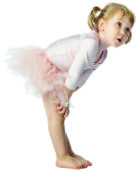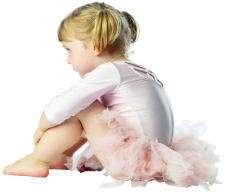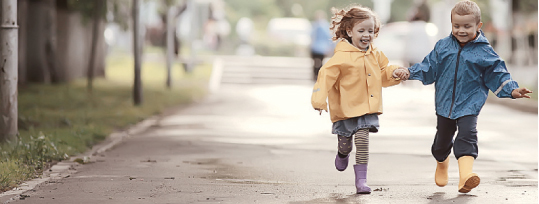
by Kim Jackson M.S.S.F.
Klodhoppers, Haywards Heath
As I write this article we are approaching Christmas and many of us are emerging from the second lockdown and the vaccine roll out has started. It has been a rather strange and difficult time for all of us. It’s time to reflect on the past few months and re-evaluate what is really important to us during the Year of the Coronavirus.
Amongst other things good friends and close family are key to a happy and successful life. The sunshine helps, of course, and keeping our job helps, but this horrible pandemic has shown that good health is the key factor.
It’s now time, as we move into the spring, to get ‘back to basics’ – let’s aim to maintain the caring attitude that was so prevalent during lockdown. To be more community-minded within our neighbourhood, to shop locally and support the small, independent businesses in our area, and to value our own health and wellbeing and that of our family members.
Regarding our children’s foot health it’s also time to throw away those supermarket trainers and poor quality school shoes – they’re not designed to last very long anyway. They may have been an emergency purchase during lockdown but you don’t need to subject your child’s feet to them any longer. Plus, depending on when you bought them they are likely to be too small now anyway!
It’s time to get back to getting your child’s feet properly measured and fitted once again. Restore those good foot health practices for your children’s future wellbeing. They may not thank you for it now but I guarantee they will be grateful for it in years to come.
Regular readers of my ABC articles will know that I keep saying it but, it is really important to look after your child’s feet. It’s just as important as looking after their teeth by taking them to the dentist, or looking after their eyes by taking them to the optician – their foot health is crucial.
This is because most of our bones begin to form while we are in the womb, long before we are born. These bones start out as, and are formed from, pieces of gristle known as cartilage – which gradually turns into bone. This process is called ossification. All the bones in the body are normally completely and fully ossified by the age of 25 (it is important to note that the bones in the foot are nearly fully ossified by the age of 18, although girls tend to complete their process a couple of years ahead of boys, due to the difference in hormones).
Throughout this long growing period care must be taken to avoid persistent pressure on the foot. Before the bones have fully ossified there is a danger of the bones and joints becoming distorted by pressure applied to them. Many children’s feet are deformed by the wearing of ill-fitting socks, tights and shoes that are either too small or too tight and do not allow for growth. As a result it is essential to take special care when fitting shoes for children, as their formative years shape the way they walk and their entire physiology.
So what happens when you take your child along for his or her first pair of shoes – their first ‘walkers’?
Because your child’s bones are not formed, and because the joints are cartilage not bone, he or she cannot feel pain if the shoes are incorrectly fitted. They don’t know if their shoes are a good fit or not and there’s a good chance that you probably don’t either.
That’s why you’ve chosen to get the advice, expertise and experience of a fully qualified fitter. Someone who knows how to assess your child’s feet, to measure them properly and who knows the different brands thoroughly enough, and can therefore suggest what size, style and fit will suit your child’s feet best. Any damage done at this early stage can be irreversible.
Your child may not like wearing shoes for the first time and he or she may scream the shop down throughout the entire process – and that’s probably purely because it’s the first time they’ve done this. It’s got nothing to do with the actual fit of the shoes that you are intending to buy for them, especially taking into account the recommendationof the fitter.
As your child develops and grows the gristle changes to bone and the bones lengthen at a greater rate than they thicken. Therefore the foot grows longer in proportion to its width. The arches also develop and the muscles in the foot grow stronger. Generally the fastest growth occurs in a child’s early years, but it is not a constant, it usually occurs in spurts. These growth spurts do not happen at even intervals, they can be quite random, and it can be perfectly possible for a child to outgrow a correctly fitted pair of shoes in a matter of weeks.
In adolescence the growth continues with the feet becoming longer and sometimes the relationship between length and width can change. A child needing a wide fitting at four years old, may require a much narrower fitting 6 or 8 years later because their feet have grown longer without a proportionate increase in width. This is why regular size checks are recommended even if you don’t need to buy any shoes. Any professional fitter will always carry out a size or shoe check on your child’s feet, without any obligation to buy.
By their late teens your child’s feet are fully formed and if their development has been correct, they should enter adulthood with almost perfect feet. The bones will be fully formed and positioned correctly, the muscles will be in tone and in balance, and the whole structure should be in great shape to take years of wear and tear without complaint.
Any problems that arise with the feet do not always become just a ‘foot’ problem – your child’s whole posture can be affected by ill-fitting footwear. This can include their ankles, knees, hips, lower back and neck. Even severe migraines can be attributed to ill-fitting footwear in childhood!
Take my advice – it’s the spring, so put a ‘spring’ in your child’s step and get their feet measured and fitted by a qualified professional fitter, based at one of your local independent shoe shops. You will be supporting your local high street as well as giving your child’s feet the best start they need.
Kim Jackson M.S.S.F (Member of the Society of Shoe Fitters & Children’s Foot Health Register accredited) Klodhoppers, Haywards Heath.
www.klodhoppers.com








 Respect
Respect At that time I’d already been vegan for seven years, I worked for the vegan campaigning charity Viva! and had a good knowledge of vegan nutrition. Despite all of this, I was still confronted with questions from others about my decision. How will your baby get their protein? Is it right to force veganism on a child? Won’t they feel left out?
At that time I’d already been vegan for seven years, I worked for the vegan campaigning charity Viva! and had a good knowledge of vegan nutrition. Despite all of this, I was still confronted with questions from others about my decision. How will your baby get their protein? Is it right to force veganism on a child? Won’t they feel left out?












